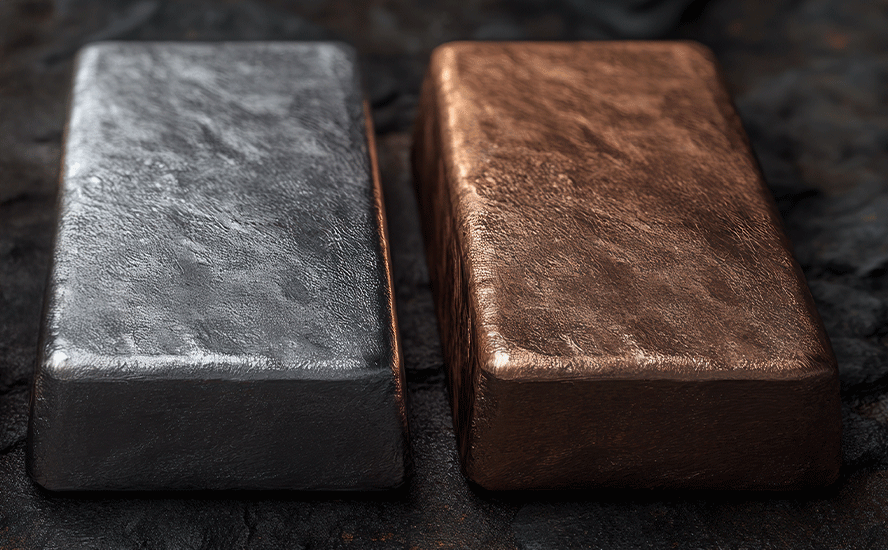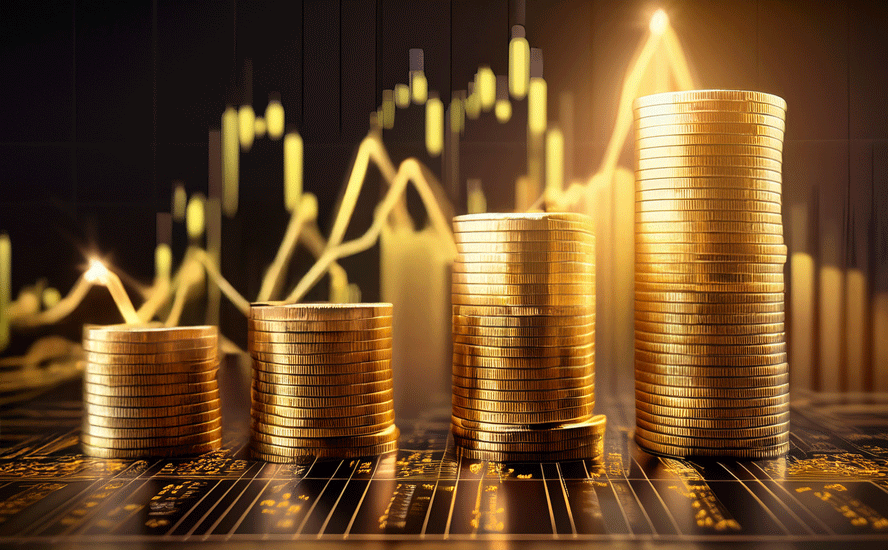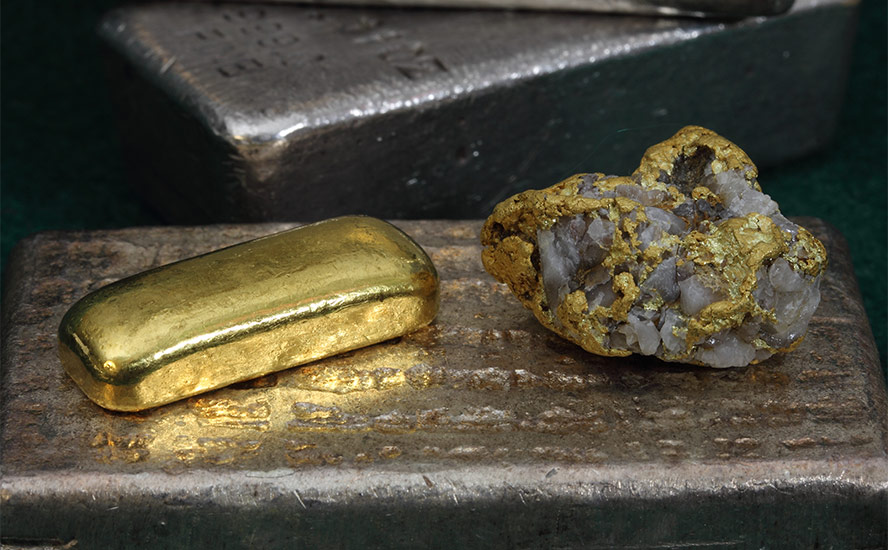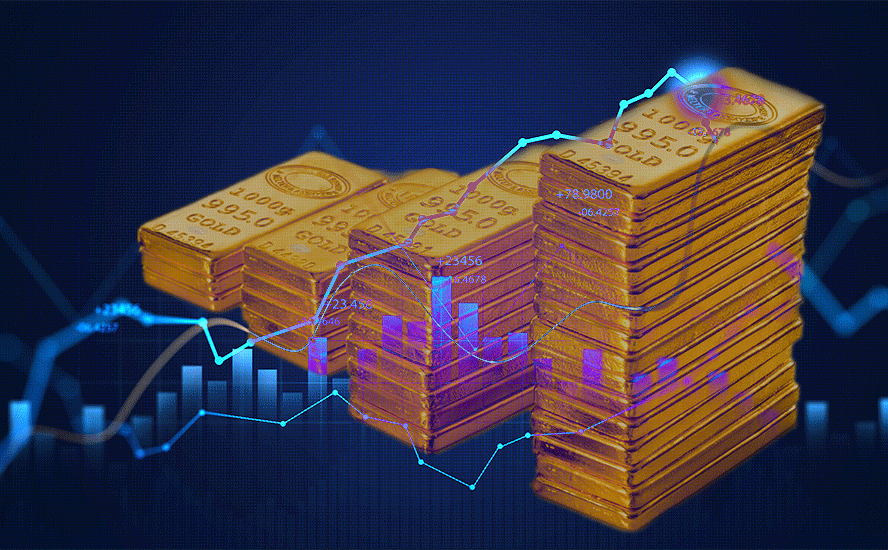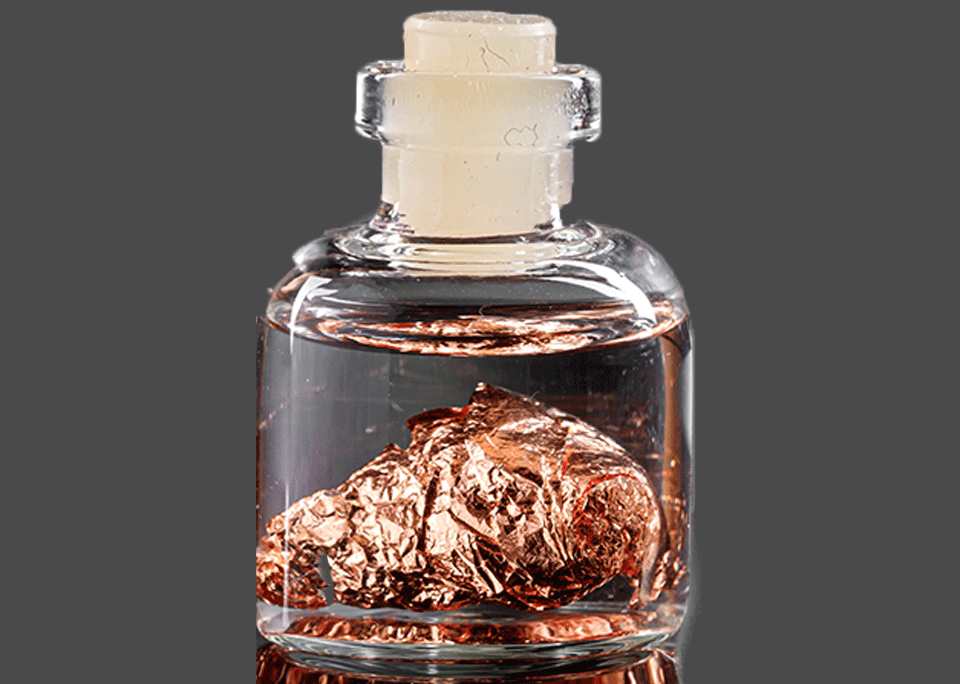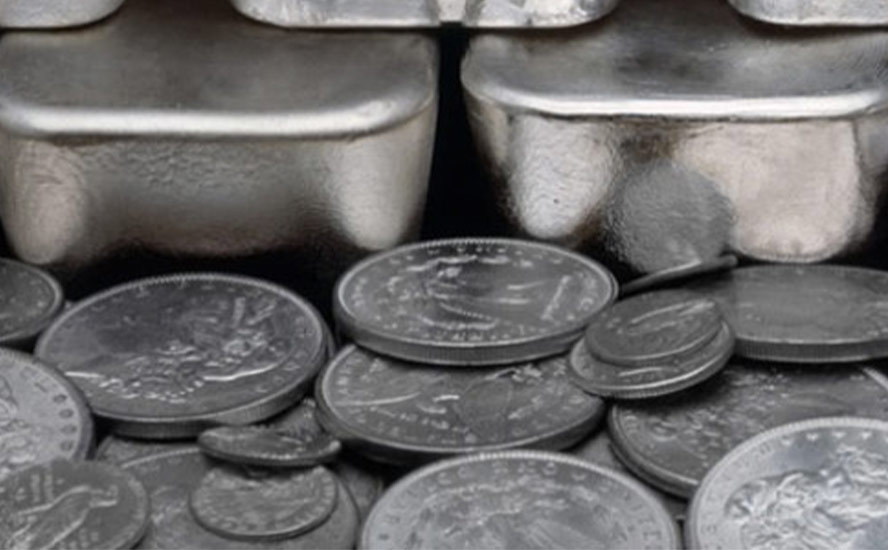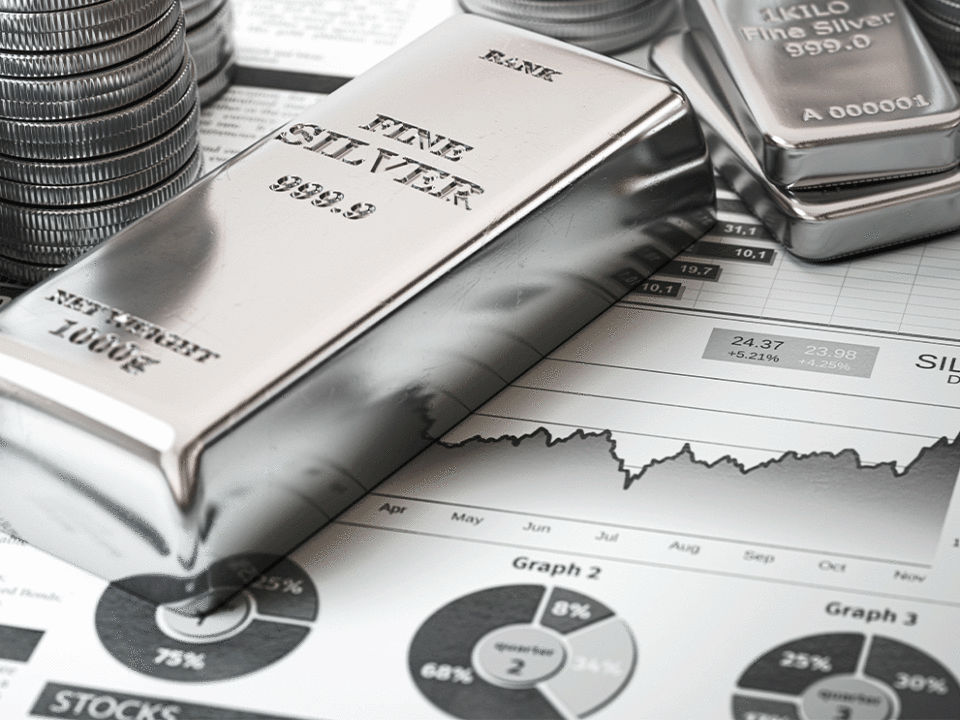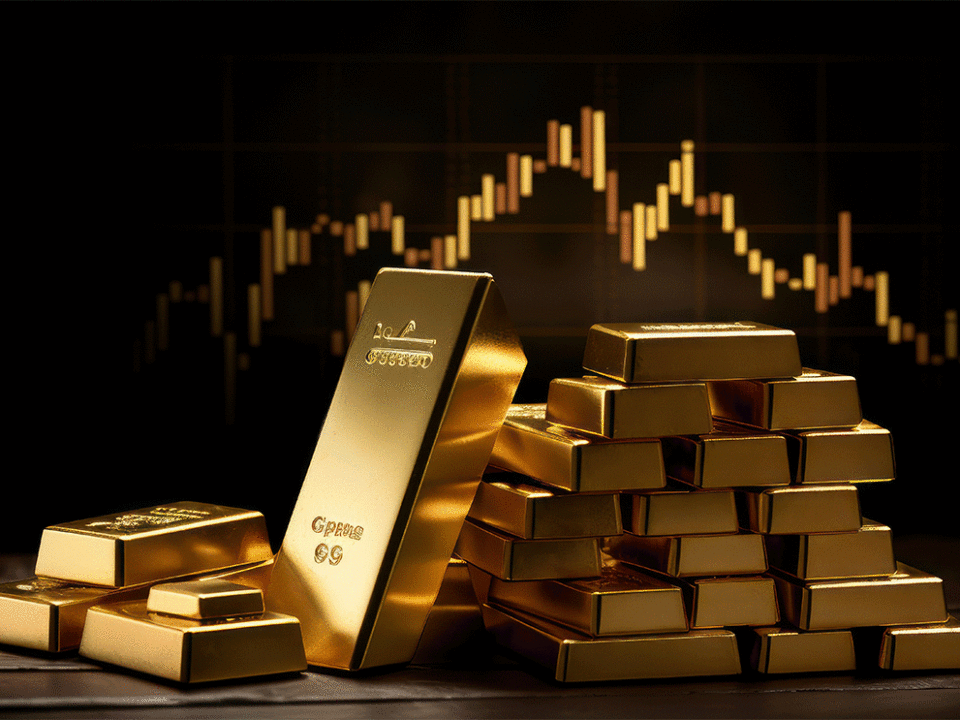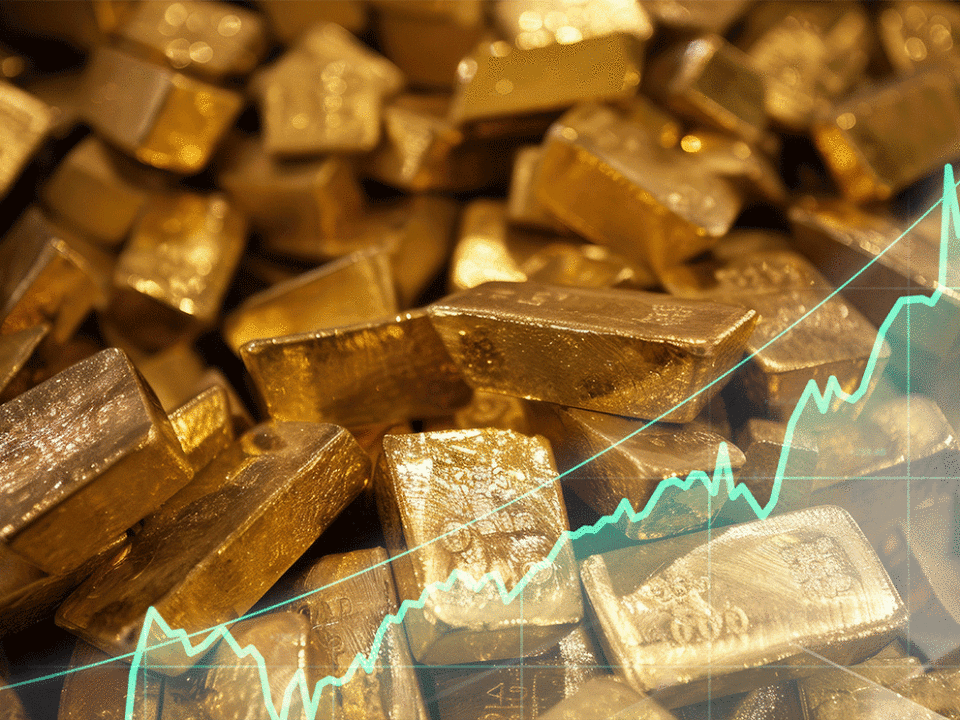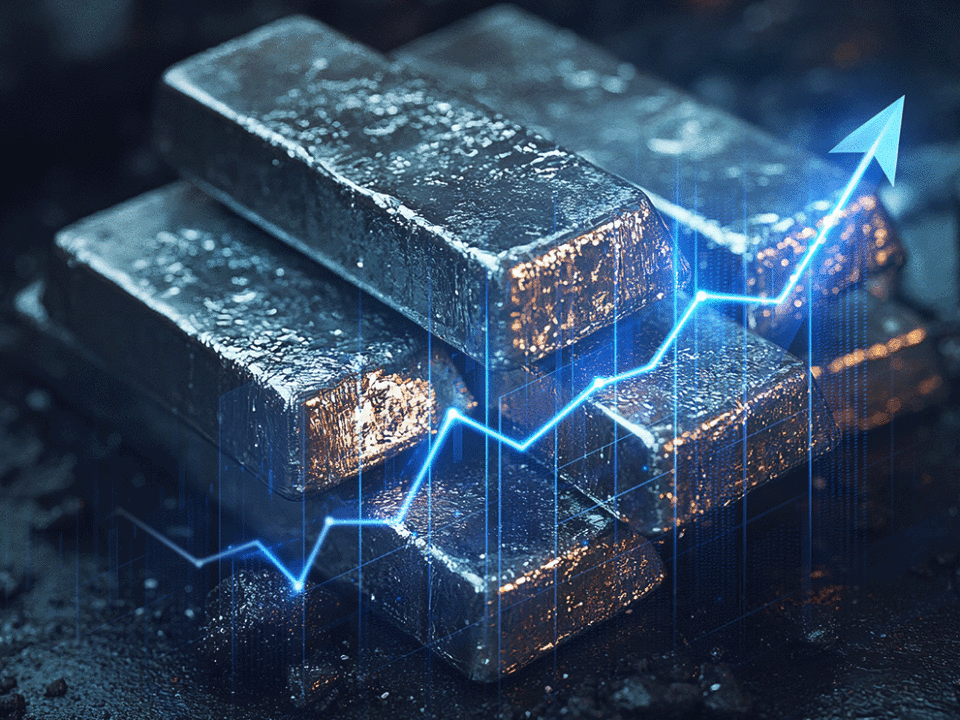Gold & Silver

2020.03.02
Precious metals are among the best places to park your money in times of economic or political distress.
Gold and silver offer stability during a period of extreme stock market volatility and low bond yields, and while they do not pay interest or dividends, they are not subject to inflation like paper currencies.
It is also, in my opinion, a smart strategy to allocate a portion of gold and silver to your investment portfolio, knowing that precious metals can be used as a “fail-safe” currency in the event of a total financial collapse.
Recent evidence suggests that gold, the grand daddy of precious metals, is a popular choice of mainstream investors, both in terms of bars or coins, and gold jewelry.
According to the World Gold Council’s new Consumer Research Report, released last November, gold is the third most consistently bought investment (46%), behind savings accounts (78%) and life insurance (56%).
Of 18,000 people surveyed around the world including in China, India, Germany, Russia and North America, about their attitudes and buying habits towards the precious metal, 56% had bought gold jewelry, and 34% had purchased platinum rings, bracelets and necklaces.
The research also showed that two-thirds of retail investors believe that gold is a good safeguard against inflation and currency fluctuations, and 61% trust gold more than fiat (paper) currencies.
In this article we’re taking a deep dive into into gold & silver from an investment perspective.


Gold
The allure of gold goes back thousands of years.
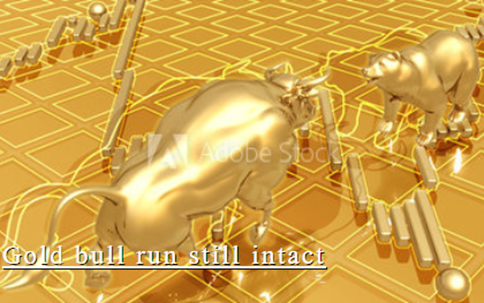
Due to its unique properties, gold was one of the first metals discovered by mankind. The precious metal doesn’t rust or corrode, is malleable for artwork or jewelry, and conducts heat and electricity.
Gold is found at surface in flakes and nuggets, making it easily mineable. Historians agree the Egyptians were the first to make gold jewelry using the lost-wax method, around 3600 BC. The funeral mask of King Tutankhamen is one of the most stunningly beautiful examples of Egyptian goldsmithing. The Egyptians also learned how to alloy gold with other metals, to vary hardness and color.
Other ancient civilizations including the Incas, Aztecs and Muiscas used gold as an artistic medium or in religious ceremonies.
While gold was rare and valuable, it was also ideal for pressing into coins. Because gold coins were portable, private and permanent, they fit the early definition of a currency. Gold could be used as a medium of exchange, a unit of account, and a store of value.
The ancient Chinese, Lydians (in Turkey), Greeks and Romans all used gold as money, with the Romans acknowledged as the first civilization to employ gold as a currency across their vast empire. Historical records show Emperor Julius Caesar brought back so much gold from a victorious campaign in Gaul (modern-day France) to give 200 coins to each of his soldiers and pay all of Rome’s debts. The Romans came up with the first water-based gold-mining methods including hydraulics, sluices, long toms and water wheels. They also mined underground using slaves and prison labour and developed a roasting technique to separate the gold mineral from the ore.
Over time, as countries moved to paper money, they realized they could fix one unit of currency to a weight in gold, a system that became known as the gold standard. Britain was the first to adopt the gold standard, in 1717, and other countries soon followed suit. In the 19th century, all countries except China used it. Domestic currencies were freely convertible into gold at the fixed price and there was no restriction on the import or export of gold.
In 1784 Thomas Jefferson said, “If we determine that a dollar shall be our unit, we must then say with precision what a dollar is.”

The founding fathers followed his advice and in 1792 defined one dollar as 371 grains of silver. The bi-metallic gold and silver standard for the nation’s newly minted currency valued gold at $19.30 per ounce.
In 1900 the governing Republicans officially announced the gold standard. All paper money was to be redeemable in gold, and silver continued as a subsidiary metal. The problem was that between 1897 and 1914, an increase in gold production pushed the gold supply up by 7.5%. However the amount of cash deposits during the same period overwhelmed the amount of gold in bank vaults – total bank deposits increased 317.5% to gold’s 7.5% rise. In 1907 the Treasury was called upon to bail out the banks that ran short on cash, resulting in an agreed need for some form of central banking.
The whole point of creating the US Federal Reserve, in 1910, was to give the new central bank control over the money supply.
In July 1944, delegates from 44 nations met at Bretton Woods, New Hampshire – and agreed to “peg” their currencies to the US dollar, the only currency strong enough to meet the rising demands for international currency transactions.
What made the dollar so attractive to use as an international currency, the world’s reserve currency, was each US dollar was based on 1/35th of an ounce of gold ($35.20/oz), and the gold was to be held by the US Treasury.
The United States operated under the gold standard until the Vietnam War, which brought renewed pressure on the dollar.
Since President Johnson refused to raise taxes to pay for social welfare reforms undertaken earlier, and the war in Vietnam, the US was running massive balance of payment deficits with the rest of the world. Speculation against the dollar intensified, and when other central banks became reluctant to accept dollars in settlement, the system began to break down.
In 1971 US President Nixon ended the convertibility of the dollar into gold for central banks, effectively demolishing the gold standard. The Bretton Woods system collapsed and gold was allowed to trade freely without a US dollar peg.
Today most paper currencies are fiat, in that they are not backed by a physical commodity like gold or gold, but rather by the government that issued it. For instance, the greenback is really nothing more than a piece of paper printed with government ink and imbued with the subjective value that a $1 bill is in fact worth the 100 cents the government says it is worth.
Historically the only way for investors to buy gold was to purchase gold coins or bars, but since 2004 precious metal ETFs have offered a more convenient way to invest in precious metals.

The convenience of buying “paper gold” through ETFs however has some serious drawbacks especially in the event of a financial meltdown like 2008 or a cataclysmic event like nuclear war or even a global pandemic such as the world is currently experiencing. The biggest downside of ETFs like SPDR Gold Shares (GLD) is that unless you have 100,000 GLD shares, you cannot take physical delivery of your gold; rather, the shares will be settled in cash.
The other problem is potential breaks in the chain of custody. When you buy shares in a gold ETF, the purchase is through an Authorized Participant, usually a large financial institution. If a primary reason in buying gold is as insurance against a financial calamity ie. banking system collapse, an ETF fails to offer any guarantee that your GLD shares would be safe if the bank were to fold.
“Physical bullion could go supernova in both price and value, yet ETF proxies could deflate or possibly go bankrupt. All long-term investors with exposure to exchange traded funds should re-examine the inherent risks associated with these investment vehicles,” writes Kitco.
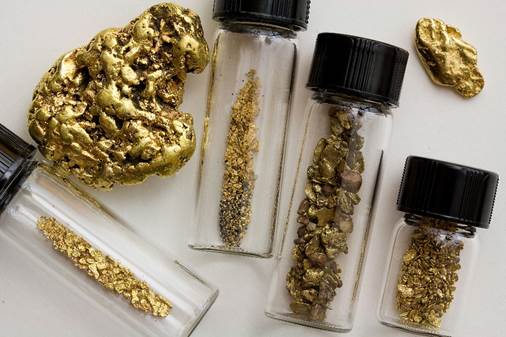
If a gold investor decides, correctly in our view, to buy bullion rather than a gold ETF, there are several options. Over the past decade or so, small bars and coins accounted for about two-thirds of annual “investment gold” demand. According to the World Gold Council, demand for bars and coins have quadrupled since the early 2000s.
For the retail investor, coins are available in denominations of 1/20, 1/10, ¼, ½ and one troy ounce. Bars can be purchased in 1, 10, 20, 50, 100, and 1,000-gram denominations as well as 1, 10, and 100 troy ounces.
Examples of popular investment gold coins are the South African Krugerrand, the American Eagle and the Royal Canadian Mint’s Pure Gold Coin. According to the World Gold Council, the largest gold coin ever created was cast by the Perth Mint in 2012. The coin weighs one tonne and is 80 cm in diameter.
The purity of each coin, or fineness, is measured either in carats (24 carats being the highest) or in parts per thousand, usually 995, 999 or 999.5. Investors are usually most interested in products that are 0.999 fine. Another option is to purchase gold rounds which are similar to coins but are not legal tender. In the United Kingdom, gold coins are popular because they are not subject to tax.
The choice of coins versus bars depends mostly on how divisible the investors wants the gold to be. Coins can be collected and sold in very small denominations, versus bars, which are less divisible.
Whether buying a coin or a bar, investors pay a premium over the spot gold price. Generally the smaller the coin or bar, the larger the premium per ounce. Investors would be wise to buy their bullion products from a bank or reputable dealer.
Buyers are provided with a certificate of authenticity, via an assay mark, and have the option of either storing their gold at a secure facility, for an annual fee, or arranging for it to be sent home for safekeeping.
An important distinction exists between large gold buyers, like central banks and gold-backed ETFs, and individual consumers. Large institutions use the London Good Delivery bar – the standard gold bar used for clearing in London (more precisely the London Bullion Market Association – LBMA), each weighing 400 troy ounces.
The LBMA’s Good Delivery standard is a way of ensuring that gold buyers are purchasing legitimate gold products of stated purity. The requirements include fine ounce weight, purity and physical appearance. Refiners wanting admission to the Good Delivery List must undergo stringent testing to verify their market history, financial standing and ability to produce gold bars that meet the high standards of London Good Delivery bars. They commit to sourcing the metal, refining it and shipping it to approved vaults in London. The bars are then traded between institutions who are part of the LBMA, including refiners, dealers, banks, mining companies and private investors. Current LBMA Good Delivery refiners include the Royal Canadian Mint, Johnson Matthey Ltd, Heraeus Precious Metals, Rand Refinery, PAMP SA, Valcambi SA and Metalor USA.
Central banks hold gold bullion among their foreign exchange reserves in secure bank vaults. According to the World Gold Council the US Federal Reserve holds 6,700 tonnes of gold – about half of the more than 12,000 tonnes of bullion the Fed stored in 1973.

The Royal Canadian Mint is a Crown corporation that produces all of Canada’s coins in circulation, plus a number of other countries’ coinage. It also designs and manufactures precious and base metals collector coins, such as the one-ounce Pure Gold and Pure Silver Coins, a Pure Gold Coin with 0.10-carat Canadian Diamond “Magnificent Maple” and a Pure Platinum 4-Coin Fractional Set, commemorating the 30th anniversary of the Platinum Maple Leaf.
The Krugerrand is a prestigious collector’s coin produced jointly by the South African Mint Company and the Rand Refinery. First struck in 1967 to market South African gold, the two-ounce proof Krugerrand features an effigy of the former president of South Africa, Paul Kruger on one side, and South Africa’s national animal, the Springbok, on the other.
The World Gold Council estimates there are about 190,000 tonnes of gold in circulation, and roughly 54,000 tonnes that could be mined economically. Gold that comes out of the ground is used in a number of ways, much of it made into jewelry – which represents about 50% of demand. Around 40% is used for investment purposes; this includes gold purchased by central banks, gold ETFs and retail investors.
The value of gold is not so much in its price, but its rock-solid value.
Investors love gold because it tends to hold its value through time. They see gold as a way to preserve their wealth, unlike fiat currencies which are subject to inflationary pressures and over time, lose their value.
The precious metal is also bought as a hedge against what investors see as government policies that drag down the dollar and create inflation – such as the quantitative easing programs imposed by the United States, the European Central Bank and Japan. In other words, gold is an economic safe haven.

Beyond ETFs and investment purposes, gold is valued for its natural beauty and radiance. For this reason many cultures believed it to represent the sun.
Gold jewelry is available in a number of palettes including yellow, white and soft pink. White gold, a popular choice for wedding bands, is made by alloying 24-karat gold with palladium or silver. Mixing copper with gold produces rose gold. Rhodium is sometimes added to create a harder surface with a brighter shine.
The purity of gold jewelry is measured in carats. The highest is 24-carat gold, indicating pure gold with no other metals. Eighteen-carat is 75% gold and 25% other metals. The minimum for a ring, bracelet or necklace varies by country, for example in the US 10 carats is the minimum standard, it’s 8 carats in Denmark and Greece, and for France, the UK, Austria, Portugal and Ireland, 9 carats in the minimum to be called gold.
Fineness is another way of expressing precious metals content in jewelry. This is purity in parts per thousand. For example 24-carat gold is represented as .999, 14 carats as .583 and 18 carats as .750. These numbers are stamped on jewelry without decimal points.
India and China are the two largest markets for gold jewelry.
In India it is said, “a marriage is not a marriage without gold.” Indians find it auspicious to give gold jewelry during the Diwali festival, which begins in October, and wedding season. Gold-shopping for the bride is thought to bring good fortune and invoke the blessings of a Hindu goddess. At nearly 20 million weddings a year, Indians’ annual demand for the precious metal exceeds 514 tonnes. Easy to see why the country’s private gold holdings are the largest in the world, a mind-boggling 24,000 tonnes. (almost as much as the world’s top 10 central bank holdings combined)

However in 2016 China overtook India as the world’s top buyer of gold jewelry. The country’s growing throng of affluent consumers is driving demand for gold rings, bracelets and necklaces, especially in January and February when many Chinese purchase gold jewelry as gifts for Chinese New Year. According to McKinsey & Company, by 2025 China will represent up to 44% of the global luxury jewelry market.
Last year gold had its best year since 2010, rallying to a six-year high and outperforming US Treasuries, commodities, US high yield indices and emerging market stocks. The yellow metal also reached record levels in most major currencies except the US dollar and Swiss franc.
2019 saw strong demand for gold-backed ETFs and gold futures, especially after June when the US Federal Reserve began to ease interest rates. However, high gold prices took a toll on bars, coins and jewelry investment.
During the second half, annual jewelry volumes fell 6%, according to the World Gold Council, with Q4 jewelry demand sinking to its lowest level since 2011. Economic weakness in China and India explained much of the drop, along with high gold prices, rising inflation, trade disputes and younger buyers’ shift in taste towards lighter jewelry pieces with fashionable designs, the WGC said.
It was much the same story for gold bar and coin demand – with weaker economies not only in China and India but across much of Asia, the Middle East, Europe and North America, driving down demand by 20% in 2019.
On the bright side, the amount that consumers spent on gold jewelry grew by 3% to a five-year high of US$93.4 billion – with most of the growth coming in the fourth quarter.
Silver
Silver has some of the same properties as gold, making it suitable for artwork, jewelry, and as a medium of exchange in silver coins and bars.
But unlike gold, silver has many more industrial applications – almost as many as oil. The precious metal is strong, malleable and conducts heat and electricity better than any other material.

Over 50% of silver demand comes from industrial uses like solar panels, electronics, the automotive industry and photographic applications. The solar power industry currently accounts for 13% of silver’s industrial demand. Around 20 grams of silver are required to build a solar panel.
The Silver Institute predicts 100 gigawatts of new solar facilities will be constructed per year between 2018 and 2022, which would more than double the world’s 2017 capacity of 398GW. A recent study by the University of Kent found that rising demand for solar panels is driving up silver prices.
Historically though, it was silver’s natural beauty that attracted interest. It’s no accident that silver’s atomic symbol, Ag, from the Latin argentum, is taken from the Greek word for shiny.
The first silver mining began around 3000 BC in what is modern Turkey. Inhabitants began fashioning ornaments and jewelry out of silver ore, and crafting utensils, noticing silver’s anti-bacterial properties.
About 700 BC silver started being used as a currency – a role it has maintained in nearly every ancient and modern culture About 85% of the world’s silver came from mines in Bolivia, Peru and Mexico between 1500 and 1800.
The drachma coin of ancient Greece, the Roman denarius and British pound sterling all contained a percentage of silver.
“Native silver” found in the earth’s crust on its own, is relatively rare. More commonly, it is mined alongside gold, or as a by-product of zinc-lead ore.
Like gold, silver comes in various purities. The purest is .999 fineness, however this 99.9% silver is considered too soft for making jewelry. To strengthen it, jewelry designers add harder metals like copper, creating “sterling silver” (92.5% silver and 7.5% copper). Many jewelry consumers prefer sterling silver to gold for its polished look, weightiness and durability.
The rarity of both precious metals becomes apparent when we consider how little gold and silver have been mined throughout history – just 190,000 tonnes of gold and 1.6 million tonnes of silver. Or in ounce terms, 6.1 billion oz of gold and 51.3 billion oz of silver. All the gold ever mined in the world could fit into a cube 21.6 meters on each side, and all the above-ground silver could fit into a 52m cube.
While most of the mined gold is still around, either cast as jewelry, or smelted into bullion and stored for investment purposes, the same cannot be said for silver. It’s estimated around 60% of silver is utilized in industrial applications, leaving only 40% for investing.
Despite silver being about 17.5 times more plentiful than gold in the earth’s crust, silver and gold have roughly the same amount, ~2.5 billion ounces, available for investment purposes. However, since very little gold is used by industry, it trades as an investment commodity – prices moving up and down in relation to factors like the US dollar, inflation, interest rates and sovereign bond yields.
In comparison, silver commands a relatively small amount for investment, just 40% of supply. Because over half of supply is needed for industrial applications, silver trades more like an industrial metal than an investment commodity.
This also explains silver’s volatility. Because the investment market for silver is so small (60% is locked up in industrial uses) prices swing up and down wildly, at relatively low volumes.
When gold is over-valued compared to silver, investors take advantage of the arbitrage opportunity, by selling some of their gold holdings to buy silver. The opposite occurs when silver is over-valued compared to gold. In that situation, precious metals investors sell silver to buy gold.
On June 12, the gold-silver ratio hit a 26-year high by breaking through the 90-ounce mark – meaning it took over 90 ounces of silver to purchase one ounce of gold. The higher the number, the more undervalued is silver or, to put it another way, the farther gold is pulling away from silver, valued in dollars per ounce.
The current gold-silver ratio, 91:1, is way higher than the historical ratio of 50-60 ounces of silver to one ounce of gold, meaning that silver is highly undervalued compared to gold. It means an investor with an ounce of gold could sell his gold for 91 ounces of silver.

Silver and gold both spiked last summer after the US Federal Reserve began cutting interest rates. In July the Fed lowered rates three times before freezing the (benchmark) federal funds rate at a range of 1.5 – 1.75% in November. The market is reportedly expecting multiple cuts in 2020.
That, along with similarly dovish policies among other central banks, a record $17-trillion of negative-yielding sovereign bonds, and fresh safe haven demand due to tensions with Iran, and a lack of progress on trade talks, to name two key issues, powered the precious metals to new heights.
Silver is expected to do well again this year, through a combination of higher industrial and investment demand, and tightened supply owing to mine production issues and output cuts. Last year’s silver supply of 1.004.3 billion ounces failed to meet physical demand of 1.033 billion ounces, leaving a 29.2Moz deficit.
Conclusion
This is gold’s true Minsky Moment. Many things can happen to cause instability in the global economy, including a worsening coronavirus, a slowdown in shipping, a denting of the largest economies – the US, China, Germany, Japan – and in the worst of cases, a war (though that would be good for the military-industrial complex) or another global recession.

But these are just reactions, symptoms of the disease…paper money, a global fiat currency system. The uncontrolled printing of paper money has caused consumer debt, business debt and government debt to reach out-of-control proportions and the country in the worst debt shape is the United States which also happens to have the world’s reserve currency.
“All the effort and planning imaginable cannot make paper money work. There is no way paper can be “improved” as money. Whenever governments are granted power to purchase their own debt, they never fail to do so, eventually destroying the value of the currency. Political money always fails because free people eventually reject it. For short periods individual countries can tell their citizens to use paper, but only at the sacrifice of personal and economic liberty.”
We know that the US stock market is a bubble and all bubbles pop. It’s only a matter of when. We also know that much has been done by the Trump administration to fray existing alliances and to inflame tensions with trading partners-turned-adversaries, namely China, the European Union and even its two NAFTA “amigos”, Canada and Mexico.

China, Russia, Turkey and others, are already moving away from pricing trade in US dollars and buying US debt through treasury purchases. Central Banks have been stocking up on gold.
Will the rest of the world follow and punt the US$ as the world’s reserve currency? We at AOTH think so and we await gold’s coming Minsky Moment.
Richard (Rick) Mills
subscribe to my free newsletter
aheadoftheherd.com
Ahead of the Herd Twitter
Legal Notice / Disclaimer
Ahead of the Herd newsletter, aheadoftheherd.com, hereafter known as AOTH.
Please read the entire Disclaimer carefully before you use this website or read the newsletter. If you do not agree to all the AOTH/Richard Mills Disclaimer, do not access/read this website/newsletter/article, or any of its pages. By reading/using this AOTH/Richard Mills website/newsletter/article, and whether or not you actually read this Disclaimer, you are deemed to have accepted it.
Any AOTH/Richard Mills document is not, and should not be, construed as an offer to sell or the solicitation of an offer to purchase or subscribe for any investment.
AOTH/Richard Mills has based this document on information obtained from sources he believes to be reliable but which has not been independently verified. AOTH/Richard Mills makes no guarantee, representation or warranty and accepts no responsibility or liability as to its accuracy or completeness. Expressions of opinion are those of AOTH/Richard Mills only and are subject to change without notice. AOTH/Richard Mills assumes no warranty, liability or guarantee for the current relevance, correctness or completeness of any information provided within this Report and will not be held liable for the consequence of reliance upon any opinion or statement contained herein or any omission. Furthermore, AOTH/Richard Mills assumes no liability for any direct or indirect loss or damage or, in particular, for lost profit, which you may incur as a result of the use and existence of the information provided within this AOTH/Richard Mills Report.
AOTH/Richard Mills is not a registered broker/financial advisor and does not hold any licenses. These are solely personal thoughts and opinions about finance and/or investments – no information posted on this site is to be considered investment advice or a recommendation to do anything involving finance or money aside from performing your own due diligence and consulting with your personal registered broker/financial advisor. You agree that by reading AOTH/Richard Mills articles, you are acting at your OWN RISK. In no event should AOTH/Richard Mills liable for any direct or indirect trading losses caused by any information contained in AOTH/Richard Mills articles. Information in AOTH/Richard Mills articles is not an offer to sell or a solicitation of an offer to buy any security. AOTH/Richard Mills is not suggesting the transacting of any financial instruments but does suggest consulting your own registered broker/financial advisor with regards to any such transactions
Legal Notice / Disclaimer
Ahead of the Herd newsletter, aheadoftheherd.com, hereafter known as AOTH.Please read the entire Disclaimer carefully before you use this website or read the newsletter. If you do not agree to all the AOTH/Richard Mills Disclaimer, do not access/read this website/newsletter/article, or any of its pages. By reading/using this AOTH/Richard Mills website/newsletter/article, and whether you actually read this Disclaimer, you are deemed to have accepted it.
